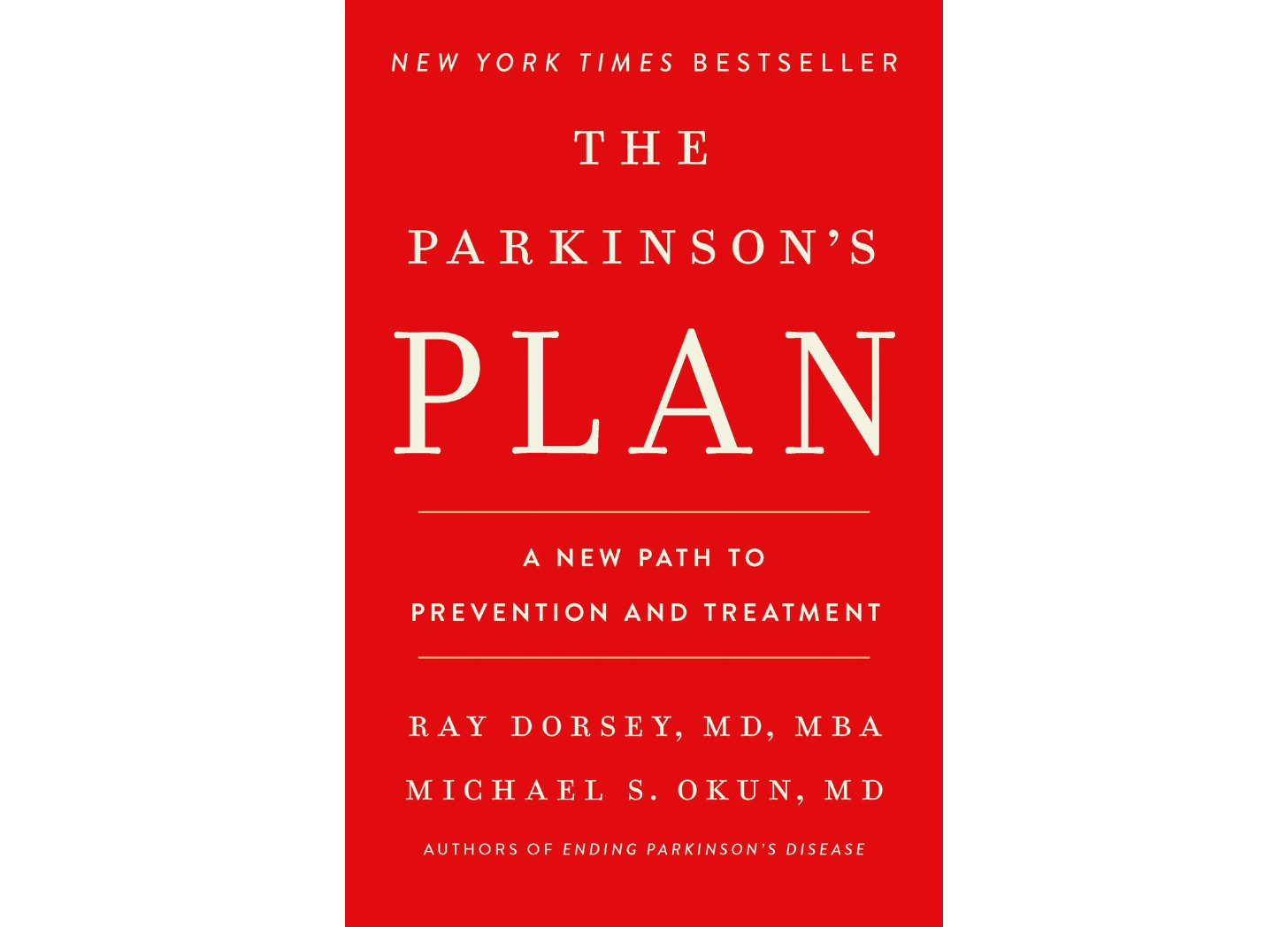The Radical Message Behind the New Book, The Parkinson’s Plan: “We Have a Chance to Get Rid of This Disease”
By Catherine Ebeling, RN, MSN, Contributing Writer, The MAHA Report
When neurologists Ray Dorsey and Michael Okun set out to write The Parkinson’s Plan, they weren’t interested in recycling the same message of resignation that often surrounds Parkinson’s disease. Instead, they issued a bold challenge to both medicine and society:
“The answer to this disease lies not within us, but outside of us—in our environment.”
–Ray Dorsey
It’s a line that should land like a thunderclap. For decades, Parkinson’s has been framed as a mysterious, neurodegenerative brain disorder tied to genes and aging. But Dorsey and Okun flip that script. Over 85% of people with Parkinson’s do not carry a genetic trait or risk factor.
Dorsey and Okun argue that Parkinson’s is largely preventable, if we have the courage to look at causes that are literally right under our noses. We are breathing, touching, and consuming the toxins that cause Parkinson’s every single day.
From Helplessness to Hope
Parkinson’s now stands as the fastest-growing neurological disorder in the world. Every nine minutes, someone in the U.S. is diagnosed. Dorsey and Okun say this explosion is not random, but the predictable result of decades of toxic chemical exposure, air pollution, and lax regulations.
In interviews, Dorsey insists that environmental toxins are the “smoking gun, ” which is a missing link the medical establishment has long ignored. He identifies trichloroethylene (TCE), a common industrial solvent, as a major concern, along with paraquat, glyphosate, and chlorpyrifos—all widely used in our environment.
A growing body of research supports this: exposure to TCE and similar solvents has been repeatedly linked to a higher risk of Parkinson’s. In fact, a 2023 report in Science called TCE “one of the hidden causes of Parkinson’s disease.”
The Chemical Footprint in the United States
The book lays out how modern life has become a massive chemistry experiment. These poisons are everywhere: from pesticides on lawns to dry cleaning agents; common farming chemicals to contaminated groundwater; even household cleaning products—these substances infiltrate our brains and slowly damage the dopamine-producing neurons that die in Parkinson’s.
The book names some of the worst offenders:
Glyphosate, the Roundup weed killer, is now detected in most people’s bodies.
Atrazine is sprayed on crops like corn, sorghum, and sugarcane, also lawns, golf courses, and yards to kill weeds. The runofff pollutes rural water systems.
Paraquat, still heavily sprayed on corn, soy, cotton, almonds, grapes, weeds and grasses, and pastures.
Trichlorethylene (TCE), a powerful toxin used in dry cleaning solvents and degreasing has been shown to cause a 5X higher risk of causing Parkinson’s.
Others include pesticide chlorpyrifos and pyrethroids in mosquito sprays.
Each plays a role in oxidative stress, mitochondrial damage, and dopamine disruption—the same processes that drive Parkinson’s disease.
A systematic review found that people who had long-term exposure to pesticides and solvents had double the risk of developing Parkinson’s. Another family-based study found that individuals who used pesticides were 1.6 times more likely to develop the disease than their unaffected relatives.
The implication is clear: We have to find a way to avoid dangerous chemicals. They are killing us and destroying our brains.
The Parkinson’s 25
The Parkinson’s Plan doesn’t stop at sounding the alarm. The Parkinson’s Plan offers a roadmap for prevention called the “Parkinson’s 25,” a set of everyday steps that can reduce exposure to toxins in the environment, and improve resilience:
Filter your air and water. Airborne pollution and solvent vapors are invisible but potent. Use HEPA air filters and reverse osmosis water purification systems, especially if you live near manufacturing, farming, or even golf courses.
Rethink your yard. Stop using all herbicides and pesticides, especially near wells or gardens.
Eat whole food. A Mediterranean-style diet, rich in high antioxidant vegetables, extra virgin olive oil, wild caught fish, and organic coffee, will support the brain. This type of diet reduces inflammation and improves gut health. It can even help improve constipation and slow cognitive decline and disease progression.
Move every day. Exercise isn’t just therapy, it’s medicine for the brain. Exercise is vital for maintaining strength, flexibility, balance, and coordination, while also helping to combat symptoms like impaired balance, stiffness, and depression.
Amplify. The message is as much political as it is personal. The authors are calling for a $3 billion national initiative to remove the worst neurotoxins from the environment and invest in prevention research.
A New Model of Advocacy
In the book’s third section, Amplify, Dorsey and Okun pivot from personal action to systemic change, reimagining the Parkinson’s care model. This includes assembling networks where neurologists, physical therapists, and mental-health professionals coordinate seamlessly — centered on the individual, not the disease.
“We have a chance to get rid of this disease—and when you have a chance, you have to take it.”
--Ray Dorsey, MD
As communities demand safer environments and better care, what once seemed impossible now feels urgent — and achievable.
This is where MAHA enters the picture. Dorsey and Okun are calling for a movement that connects medicine, environment, and public policy, and MAHA exists to amplify that very message. Through investigative reporting,
MAHA shines light on the industrial toxins and regulatory failures driving diseases like Parkinson’s, turning long-buried science into public awareness. MAHA connects the dots between pesticides in our food, solvents in our water, and the human cost of corporate capitalism. This is accountability journalism for public health.
The Bigger Message for MAHA
This is where MAHA steps in.
Dorsey and Okun are calling for a movement that unites medicine, environment, and public policy — and MAHA exists to amplify that call. Through deep investigative reporting, MAHA exposes the industrial toxins and regulatory failures driving diseases like Parkinson’s, transforming buried science into public truth. We connect the dots between pesticides in our food, solvents in our water, and the human cost of corporate capitalism. This is journalism for our health, and for our future.
But The Parkinson’s Plan isn’t just about Parkinson’s. It’s a mirror held up to a system that treats diseases in isolation — reactive instead of proactive, individual instead of systemic. What’s destroying our brains is also destroying our planet.
MAHA’s mission is to uncover those toxic links between environment and chronic disease, to elevate the science the mainstream media ignores, and to demand real change from industry and government alike. Because our health should never be collateral damage in the insatiable rush for corporate profit.
So we keep digging. We keep asking hard questions.
And we keep pushing for cleaner air, safer water, real food, and honest science.




The USDA needs to change course: stop subsidizing soy and corn grown for cattle feed and ethanol. Focus instead on subsidizing small organic vegetable farms for human consumption throughout the US, not just in CA where water is scarce. Small decentralized farms with a variety of different kinds of vegetables (like they have in Europe) are less prone to widespread damage by pests. Maybe even take the USDA out of the equation altogether, since where there are subsidies there is corruption.
the flu vaccine is pushed hard on seniors. Up until recently some of the flu vaccines still had mercury in it. And as we know there's aluminum. These toxic metals cause not only autism, but Parkinson's, bipolar, ADHD, dementia, etc. Need to detox these metals out of the brain in order to heal.
Dental work containing metals also cause issues, aluminum foil, aluminum pans etc